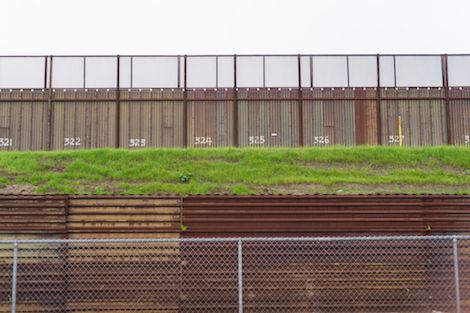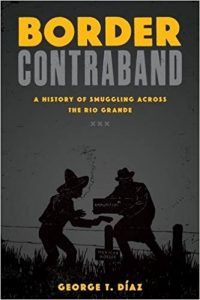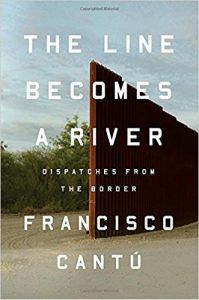
The Best Books About the United States and Mexico Border
The U.S./Mexico border is 1,900 miles of perplexing beauty that has proven to be an enigma for Americans and Mexicans alike. Despite its unending artistry, the border has become ground zero for what I like to call “border contraband.” We have all seen or heard about drug trafficking, human trafficking, and illegal immigration from various news sources. Some are credible while others simply like to stir the pot. The fact of the matter is that if you have not lived by the border or have not even frequented it, you will never truly understand it. That being said, those who do live in border towns do not automatically qualify as border experts. Despite being in close proximity to the mighty Rio Grande, the border remains a baffling region where even the most experienced individuals are frequently mystified by it.
Much has been written about the border over the last few years as it has proven to be a favored topic of heated debates. There are books available about border relations, human and drug trafficking, narcos (drug dealers), border violence and so much more. While I am not a border or foreign relations expert, I grew up on the border and lived there for over 30 years. My experiences are unique in that I have seen what many others have not. This is a sensitive subject for many, but a subject of distress that needs to be discussed. So here are my recommendations for some of the best border books I have read.
 All the Angels and Saints: Dispatches from the U.S. Borderlands by Stephanie Elizondo Griest
All the Angels and Saints: Dispatches from the U.S. Borderlands by Stephanie Elizondo Griest
No other region has been shaped by Spanish conquistadors, Mexican revolutionaries, cowboys, ranchers, Texas Rangers, Civil War generals, entrepreneurs, and empire builders quite like the Rio Grande Valley in deep South Texas. Stephanie Elizondo Griest, a fearless traveler and writer, is a native of South Texas who spent much of her career learning and writing about cultures all over the world. It wasn’t until much later in life that she realized she had neglected the border region of South Texas, an area where she grew up and knew all too well. Her book is compelling, detailed and the scholarship is unmatched. It tells of the amazing coincidences of her people of South Texas, a predominantly Hispanic region, and of the Mohawks of the Awkwesasne Nation on the U.S. and Canada border in New York. Through her research, Elizondo Griest began noticing the many similarities shared by these vastly different cultures/regions. Having lost their land through devious treaties, their mother tongues at English-only schools, and their traditional occupations through capitalist ventures, Tejanos and Mohawks alike struggle under the legacy of colonialism. Toxic industries surround their neighborhoods while the U.S. Border Patrol militarizes them. Her book details a dark microhistory that has been neglected for too long. Only a cursory examination into the border struggles by these two regions has been undertaken. This one is a must read.
 Border Contraband: A History of Smuggling Across the Rio Grande by George T. Diaz
Border Contraband: A History of Smuggling Across the Rio Grande by George T. Diaz
Movies and television shows love to depict bootlegging as a glorified struggle of turf and money by gangsters like Al Capone, Lucky Luciano, Arnold Rothstein, Meyer Lansky and many others. But a little known fact is that bootlegging was not concentrated solely on the East Coast of the United States. Tequileros (tequila people) were illegally smuggling tequila from Mexico into the United States to profit during the Prohibition era as well. Diaz’s book does a great job of detailing how Tequileros smuggled tequila into the U.S. using the Rio Grande and back trails in thick brushland. Most of these runners were Mexican males who were eventually put out of business most famously by the infamous Texas Rangers. Many of these run-ins ended in Mexicans being murdered at the hands of various Rangers. A story told to me by my grandfather is one of how Mexican women used to hide tequila under their clothing to avoid detection by Rangers. Many smugglers felt Rangers would not search the women but this eventually proved to be untrue. This book is a great read as it provides a glimpse into the early days of illegal smuggling on the border. (Note: Cotton was smuggled across the Texas/Mexico border during the Civil War).
 The Line Becomes a River: Dispatches from the Border by Francisco Cantu
The Line Becomes a River: Dispatches from the Border by Francisco Cantu
Francisco Cantu spent four years as a Border Patrol Agent along the Arizona/Mexico border region and the Texas/Mexico border region. Being Hispanic himself, Francisco assumed he would learn more about the border and understand it better by working as an agent. He convinced himself that this would be the answer to all his questions. As time went on, however, he quickly realized that the border was more complicated than he could ever imagine. He soon realized the line of work did not satisfy his need to learn about the border and its people. While as an agent, he kept detailed journals of his experiences along the border. These experiences came to fruition in this amazing read. Cantu details his experiences coming across immigrants who were seeking a better life in the United States, as well as his experiences with drug smugglers and coyotes (those who smuggled humans “illegally” across the border). This book comes across as a genuine attempt by Cantu to understand just what it is he experienced in his four years as an agent and intelligence guru. He is quick to acknowledge that although his attempt at understanding the border was admirable, he is still perplexed by the entire border dynamic. I recommend this read to anybody who wishes to learn more about the true border experience.
 Wolf Boys: Two American Teenagers and Mexico’s Most Dangerous Drug Cartel by Dan Slater
Wolf Boys: Two American Teenagers and Mexico’s Most Dangerous Drug Cartel by Dan Slater
Now for the much darker side of the border in recent years. This one is not for the faint of heart. Dan Slater’s book highlights the ongoing border war and drug smuggling that spread across news outlets like a pestilence over the last decade. Slater acknowledges there is a perpetuating cycle of teenagers who are recruited into the lucrative cartel war. In Wolf Boys, Slater takes readers on a harrowing, often brutal journey into the heart of the Mexican drug trade. His book more specifically focuses on Gabriel Cardona, a teenager from Laredo, TX who becomes caught up in the drug war. Cardona is an asset to Los Zetas (a feared drug cartel) due to his american citienship. Cardona and his friends soon become the cartel’s American hitmen who perform brutal killings in the name of the cartel. But this all comes to an end when the teen hit men encounter a Mexican-born homicide detective determined to keep cartel violence out of his adopted country. Detective Robert Garcia’s pursuit of the boys puts him face-to-face with the urgent consequences and new security threats of a drug war he sees as unwinnable. This book is a great read that shows readers just how bad things can be on the border and in Mexico. If you are up for a jaw-dropping, horrifying read, then this is the book for you.
I have to conlude this piece by letting readers know that the border is inhabited by millions of beautiful people. There isn’t constant violence, but there is an eighteen foot steel wall that leaves the people of the border feeling like they are not Mexican enough to be Mexican and not American enough to be American. If you can, I urge you to take some time to frequent the border and converse with the locals so you can gain at least a minute understanding of what it truly means to live on the border.





 The Line Becomes a River: Dispatches from the Border
The Line Becomes a River: Dispatches from the Border Wolf Boys: Two American Teenagers and Mexico’s Most Dangerous Drug Cartel
Wolf Boys: Two American Teenagers and Mexico’s Most Dangerous Drug Cartel







